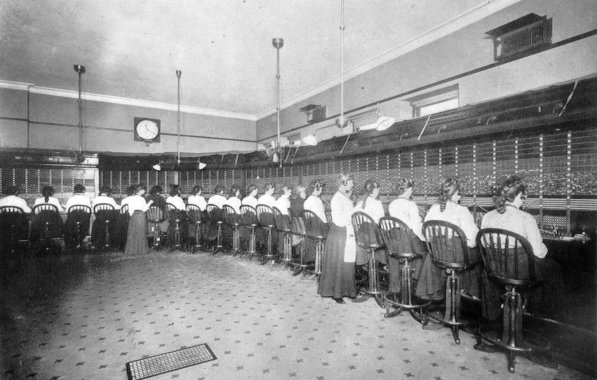Learning Electricity
Today, we become electrified. The University of Houston's College of Engineering presents this series about the machines that make our civilization run, and the people whose ingenuity created them.
I suspect that you and I are in the middle of the most rapid and intense technological revolution the world has ever seen. The last one that came even close was the sudden introduction of some fifteen million new printed books, just after Gutenberg. Now we have a billion new computers, and they're linked by the Internet.
Trying to understand such an assault while it's happening is like watching rain come down and failing to see the gathering deluge. We need to stand outside of time and space. The best we can do is to look for parallels in other revolutions.
So I've been looking at early-twentieth-century books on electricity to see how we reacted to the arrival of public electric power. Edison built a power plant to supply his new electric lights in 1882 -- New York City's Pearl Street Station. But such plants soon began serving many other new technologies. One of the most important was electric-rail-trolley service.
By 1889, fifty trolley systems were running in America on only a hundred total miles of track. Our cities immediately began building light rail on a very small scale. Thirty years later, more than a thousand trolley systems were operating on almost fifty thousand miles of track. As early as 1907, the average American in a small city rode the trolley around eighty times a year. In big cities people rode the trolley almost daily. Thus, even before the automobile, cities were being reshaped by a radical new transportation medium that has almost vanished today.
A 1926 book argues for the electrification of agriculture. Its author speaks vaguely about needs for electric grindstones, milking machines, and the farmhouse itself. While he has no clear idea what the scope of electrical use will be, he strongly believes that farmers should look to hydroelectric power. Seven years later, President Roosevelt signed the TVA Act, which provided rural hydroelectric power on a huge scale.
A 1910 book tells the early history of the telephone. Two pictures of a New York City street show it darkened by telephone wires in 1890, and then clear of wires twenty years later. The lines were already underground and assimilated.
As the author talks about hopes for developing long-distance, and transoceanic, service, he says something that catches us by surprise. He believes that full telephone service must be provided by a monopoly. You and I look at competing computer operating systems, and we wish we didn't have to worry about Unix, Windows, and Mac. We forget that the raw energy of creative cross-fertilization is what drives technology now, just as it drove it then.
These authors all knew that something vast was afoot. Each asked, in one way or another, where electricity was taking us. None had the answer, nor did any see how electricity was derailing every expectation as it took shape. It was a world, in all respects, remarkably like the one that's sweeping you and me along today.
I'm John Lienhard, at the University of Houston, where we're interested in the way inventive minds work.
(Theme music)
Ashe, S. W., Electric Railways Theoretically and Practically Treated. Vols. 1 and 2, New York: D. Van Nostrand Co., 1907.
Buck, M. B., The Electric Railway, New York: McGraw-Hill Book Company, Inc., 1915.
Harding, C. F., and Ewing, D. D., Electric Railway Engineering. New York: McGraw-Hill Book Co. 1926.
Tripp, G. E., Electric Development as an Aid to Agriculture. New York: The Knickerbocker Press, 1926.
Casson, H. N., The History of the Telephone. Chicago: A. C. McClurg & Co., 1910.

Picture of a 1910 telephone exchange in New York City
(from the Casson source above)